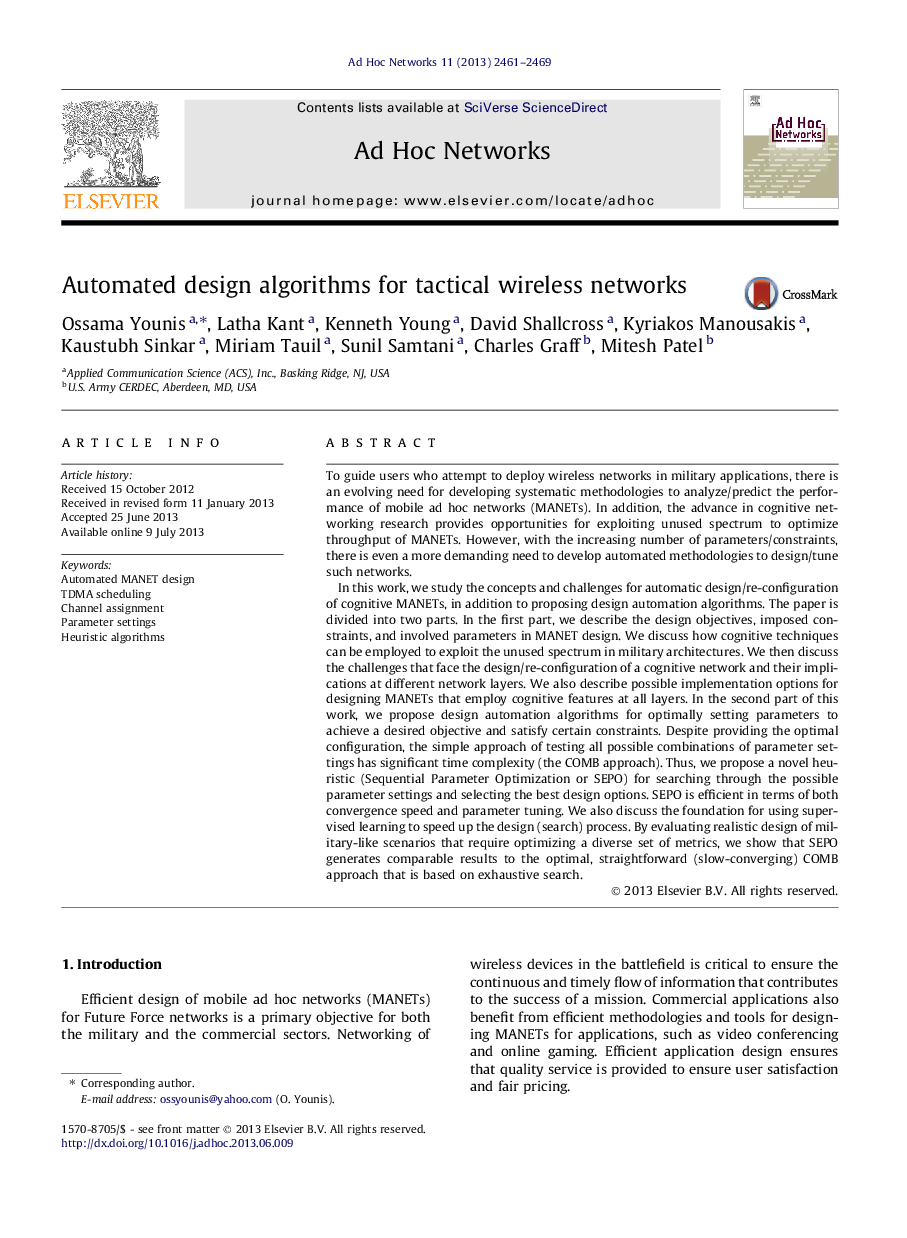| کد مقاله | کد نشریه | سال انتشار | مقاله انگلیسی | نسخه تمام متن |
|---|---|---|---|---|
| 445491 | 693196 | 2013 | 9 صفحه PDF | دانلود رایگان |

To guide users who attempt to deploy wireless networks in military applications, there is an evolving need for developing systematic methodologies to analyze/predict the performance of mobile ad hoc networks (MANETs). In addition, the advance in cognitive networking research provides opportunities for exploiting unused spectrum to optimize throughput of MANETs. However, with the increasing number of parameters/constraints, there is even a more demanding need to develop automated methodologies to design/tune such networks.In this work, we study the concepts and challenges for automatic design/re-configuration of cognitive MANETs, in addition to proposing design automation algorithms. The paper is divided into two parts. In the first part, we describe the design objectives, imposed constraints, and involved parameters in MANET design. We discuss how cognitive techniques can be employed to exploit the unused spectrum in military architectures. We then discuss the challenges that face the design/re-configuration of a cognitive network and their implications at different network layers. We also describe possible implementation options for designing MANETs that employ cognitive features at all layers. In the second part of this work, we propose design automation algorithms for optimally setting parameters to achieve a desired objective and satisfy certain constraints. Despite providing the optimal configuration, the simple approach of testing all possible combinations of parameter settings has significant time complexity (the COMB approach). Thus, we propose a novel heuristic (Sequential Parameter Optimization or SEPO) for searching through the possible parameter settings and selecting the best design options. SEPO is efficient in terms of both convergence speed and parameter tuning. We also discuss the foundation for using supervised learning to speed up the design (search) process. By evaluating realistic design of military-like scenarios that require optimizing a diverse set of metrics, we show that SEPO generates comparable results to the optimal, straightforward (slow-converging) COMB approach that is based on exhaustive search.
Journal: Ad Hoc Networks - Volume 11, Issue 8, November 2013, Pages 2461–2469